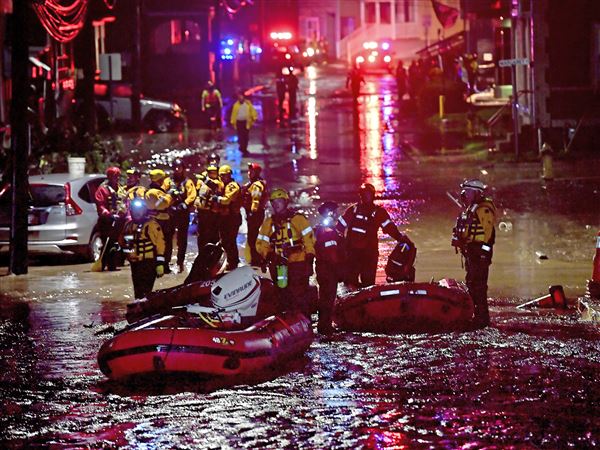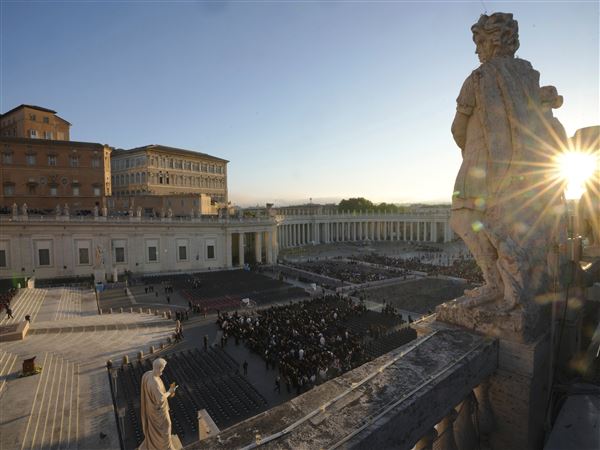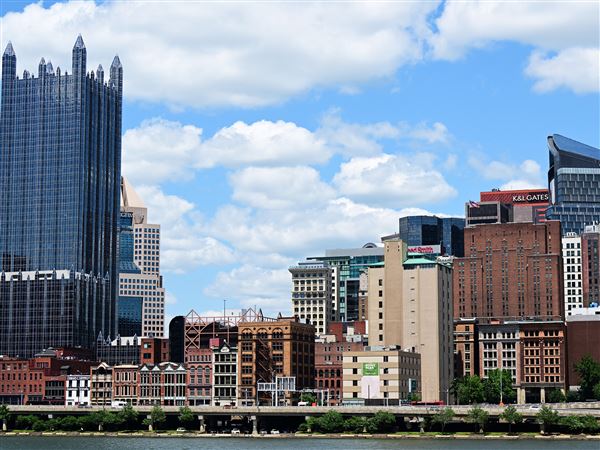SAN JUAN, Puerto Rico — Wielding the most powerful winds ever recorded for a storm in the Atlantic Ocean, Hurricane Irma bore down Tuesday on the Leeward Islands of the northeast Caribbean on a forecast path that could take it toward Florida over the weekend.
The storm, a dangerous Category 5, posed an immediate threat to the small islands of the northern Leewards, including Antigua and Barbuda, as well as the British and U.S. Virgin Islands and Puerto Rico.
President Donald Trump on Tuesday evening declared emergencies in Florida, Puerto Rico and the U.S. Virgin Islands in advance of what forecasters say could be the most powerful hurricane to strike the Atlantic coast in more than a decade, authorizing the Department of Homeland Security and the Federal Emergency Management Agency to coordinate disaster relief efforts in those places. And the Pentagon said Tuesday that it was putting two U.S. Navy ships staffed with Marines on standby to help FEMA in the aftermath of Irma.
Irma’s size and strength put the entire state of Florida on notice Tuesday. Residents and visitors prepared to leave in anticipation of catastrophic winds and floods. Water and basic foodstuffs were flying off the shelves of some stores. Florida Gov. Rick Scott ordered the suspension of road tolls across the state.
People on the Florida Keys were putting up hurricane shutters and wooden boards on homes and businesses. On Wednesday, schools will be closed and mandatory evacuations will begin, county officials said. The Keys’ three hospitals started to evacuate patients on Tuesday.
At the same time, Puerto Rico’s governor, Ricardo Rossello, was warning that the effects of Irma could be catastrophic and calling the storm more dangerous than Hurricane Harvey. In his words: “The dangerousness of this event is like nothing we've ever seen. A lot of infrastructure won't be able to withstand this kind of force. … The results could be catastrophic and devastating.”
The U.S. Navy decided not to evacuate family members and other non-essential staff from its remote outpost at Guantanamo Bay, Cuba, concluding that the more than 5,000 residents can weather Irma as it grinds through the region, a spokesman said Tuesday.
Meanwhile, the governor of the U.S. Virgin Islands, Kenneth Mapp, said Tuesday morning that forecasters predict the storm could skirt the territory or even pass directly over it, and that people in the islands may start to feel the storm’s effects around midmorning Wednesday.
"The Leeward Islands are going to get destroyed," warned Colorado State University meteorology professor Phil Klotzbach, a noted hurricane expert. "I just pray that this thing wobbles and misses them. This is a serious storm."
Irma had maximum sustained winds of 185 mph 295 kph in late afternoon as it approached the Caribbean from the east, according to the U.S. National Hurricane Center in Miami.
The eye of a category 5 hurricane. #Irma #GOES16 pic.twitter.com/eATVZspJZx
— NASA SPoRT (@NASA_SPoRT) September 5, 2017
Four other storms have had winds that strong in the overall Atlantic region but they were in the Caribbean Sea or the Gulf of Mexico, which are usually home to warmer waters that fuel cyclones. Hurricane Allen hit 190 mph in 1980, while 2005's Wilma, 1988's Gilbert and a 1935 great Florida Keys storm all had 185 mph winds.
Irma is so strong because of the unusually warm waters for that part of the Atlantic.
Hurricane-force winds extended outward up to 60 miles from the center and tropical storm-force winds extended outward up to 175 miles.
The center of Irma was about 130 miles east of Antigua and about 135 miles east-southeast of Barbuda, prompting an ominous warning from officials as the airport closed.
People in the two-island nation should seek protection from Irma's "onslaught," officials warned in a statement as authorities cut power, closing with: "May God protect us all."
Several small islands were directly in the path of the storm. In addition to Barbuda they included Anguilla, a small, low-lying British island territory of about 15,000 people.
Authorities there converted three churches and a school into shelters as they prepared for a big storm surge and the full brunt of the winds.
"People normally go to friends and family during a storm. We'll see," said Melissa Meade, director of the Disaster Management Department. "We'll find out soon enough."
The storm was moving west at 15 mph, and the hurricane center said there was a growing possibility its effects could be felt in Florida later this week and over the weekend.
If it stays on the forecast track and reaches the Florida Straits, the water there is warm enough that the already "intense" storm could become much worse with wind speeds potentially reaching 225 mph, warned Kerry Emanuel, an MIT meteorology professor.
"People who are living [on the Florida Keys] or have property there are very scared, and they should be," Emanuel said.
The eye of the storm was expected to roar westward on a path taking it north of millions of people in Puerto Rico, the Dominican Republic, Haiti and Cuba, but meteorologists warned that it could still cause life-threating storm surges, rains and mudslides.
"Puerto Rico has not seen a hurricane of this magnitude in almost 100 years," Carlos Anselmi, a National Weather Service meteorologist in San Juan, told The Associated Press.
For the U.S. "this looks like at this point that it's very hard to miss," said University of Miami senior hurricane researcher Brian McNoldy. "You'd be hard pressed to find any model that doesn't have some impact on Florida. Whether it's the worst case or next-to-worst case, it doesn't look good."
For the Caribbean "even if the eyewall doesn't pass directly over them, which unfortunately it's going to do in the northern Leewards," it will be big enough and close enough to cause nasty storm surge, heavy rain with mudslides, McNoldy said.
The northern parts of the Dominican Republic and Haiti could see 10 inches of rain, with as much as 20 inches in the southeast Bahamas and Turks and Caicos. Authorities warned that the storm could cause landslides and flash floods and generate waves of up to 23 feet.
Government officials began evacuations and urged people to finalize all preparations as store shelves emptied out on islands including Puerto Rico. Bahamas Prime Minister Hubert Minnis says his government has ordered a mandatory evacuation of islands in the southern part of the island chain because of Hurricane Irma.
The National Weather Service said Puerto Rico had not seen a hurricane of Irma's magnitude since Hurricane San Felipe in 1928, which killed a total of 2,748 people in Guadeloupe, Puerto Rico and Florida.
"The decisions that we make in the next couple of hours can make the difference between life and death," Mr. Rossello said. "This is an extremely dangerous storm."
The director of the island's power company has warned that storm damage could leave some areas without electricity for about a week and other, unspecified areas for four to six months. The utility's infrastructure has deteriorated greatly during a decade-long recession, and Puerto Ricans experienced an island-wide outage last year.
Government officials began evacuations and urged people to finalize all preparations as store shelves emptied out around Puerto Rico.
No directly storm-related deaths were reported by Tuesday evening but a 75-year-old man died in the central Puerto Rico mountain town of Orocovis after he fell from a ladder while preparing for the hurricane, police said.
Antigua and Barbuda Prime Minister Gaston Browne said he was confident Barbuda would weather the storm.
"I am satisfied that at a governmental level that we have done everything that is humanly possible to mitigate against the effects or the potential effects of this storm," he said. "What is really required now is for Antiguans and Barbudans ... to follow the warnings and to act appropriately so that we do not end up with any serious casualties."
Puerto Ricans braced for blackouts after the director of the island's power company told reporters that storm damage could leave some areas without electricity for about a week and other, unspecified areas for four to six months.
The utility's infrastructure has deteriorated greatly during a decade-long recession, and Puerto Ricans experienced an island-wide outage last year.
Both Puerto Rico and the U.S. Virgin Islands expected 4 inches to 10 inches of rain and winds of 40-50 mph with gusts up to 75 mph.
"This is not an opportunity to go outside and try to have fun with a hurricane," Mr. Mapp warned. "It's not time to get on a surfboard."
In Florida, residents also stocked up on drinking water and other supplies.
Scott activated 100 members of the Florida National Guard to be deployed across the state, and 7,000 National Guard members were to report to duty Friday when the storm could be approaching the area. On Monday, Scott declared a state of emergency in all of Florida's 67 counties.
Officials on the Florida Keys geared up to get tourists and residents out of Irma's path, and the mayor of Miami-Dade county said people should be prepared to evacuate Miami Beach and most of the county's coastal areas.
Mayor Carlos Gimenez said the voluntary evacuations could begin as soon as Wednesday evening. He activated the emergency operation center and urged residents to have three days' worth of food and water.
A new tropical storm also formed in the Atlantic on Tuesday, to the east of Irma. The hurricane center said Tropical Storm Jose was about 1,505 miles east of the Lesser Antilles with maximum sustained winds of 40 mph. It was moving west-northwest at 13 mph and was expected to become a hurricane by Friday. So far, Jose poses no threat to land.
The New York Times, The Washington Post and Miami Herald contributed.
First Published: September 5, 2017, 9:48 a.m.
Updated: September 5, 2017, 4:42 p.m.



















